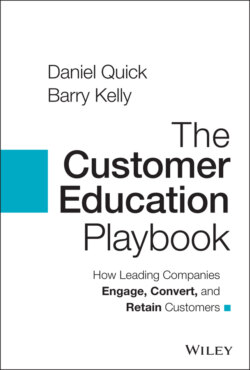Читать книгу The Customer Education Playbook - Daniel Quick - Страница 37
Made to Measure: How to Track Brand Ambassadors
ОглавлениеStart with your easy metrics. If you have a certification program, how many customers are getting certified or expressing interest in certification? How many members have you added to your online community, if relevant? These numbers show how well you're doing in reaching and engaging your audience. You'll also want to measure the impact of these programs by comparing the behaviors of two cohorts: those who are engaging with your content and those who are not.
One critical business metric that you should be using to validate the impact of your program on brand advocacy is the net promoter score (NPS). For example, ask, “What is the average NPS of customers who are engaged with the online community versus customers who are not?” NPS is based on a single question your users answer: “On a scale of 0–10, how likely are you to recommend our business to a friend or colleague?” Looking back at Asana, there was a strong correlation between NPS and course completion: customers who completed Asana Academy courses were far more likely to recommend Asana to friends and colleagues!
You can also look at customer lifetime value (LTV) to see if it improves as users consume your training content. Generally speaking, we've noticed that as users become more mature and sophisticated with your product, they unlock its full potential, which in turn will often lead them to become advocates of your brand. Training speeds up the process.
If you have more resources at your disposal, you can create a maturity model for your product or service, and then define a path to measure the impact of your education on LTV. Start by defining the behaviors or the cluster of behaviors that customers do at different stages of maturity with your product. For Asana novices, it might have been to sign in and create a task. For Twitter, it might be sending your first Tweet or following 10 people. At Caterpillar, it might be driving a tractor.
At the other end of the spectrum are much more mature behaviors. At Asana, it might be creating a portfolio with a certain number of projects inside and inviting a dozen collaborators. At Twitter it could be creating lists, scheduling tweets, having 100,000 followers, or tweeting five times each day. At Caterpillar, it might be performing complex maneuvers with an excavator. Once you decide how to differentiate a novice from a master, you can then follow the relationship between their level of expertise and how deeply they've engaged with your educational content.
